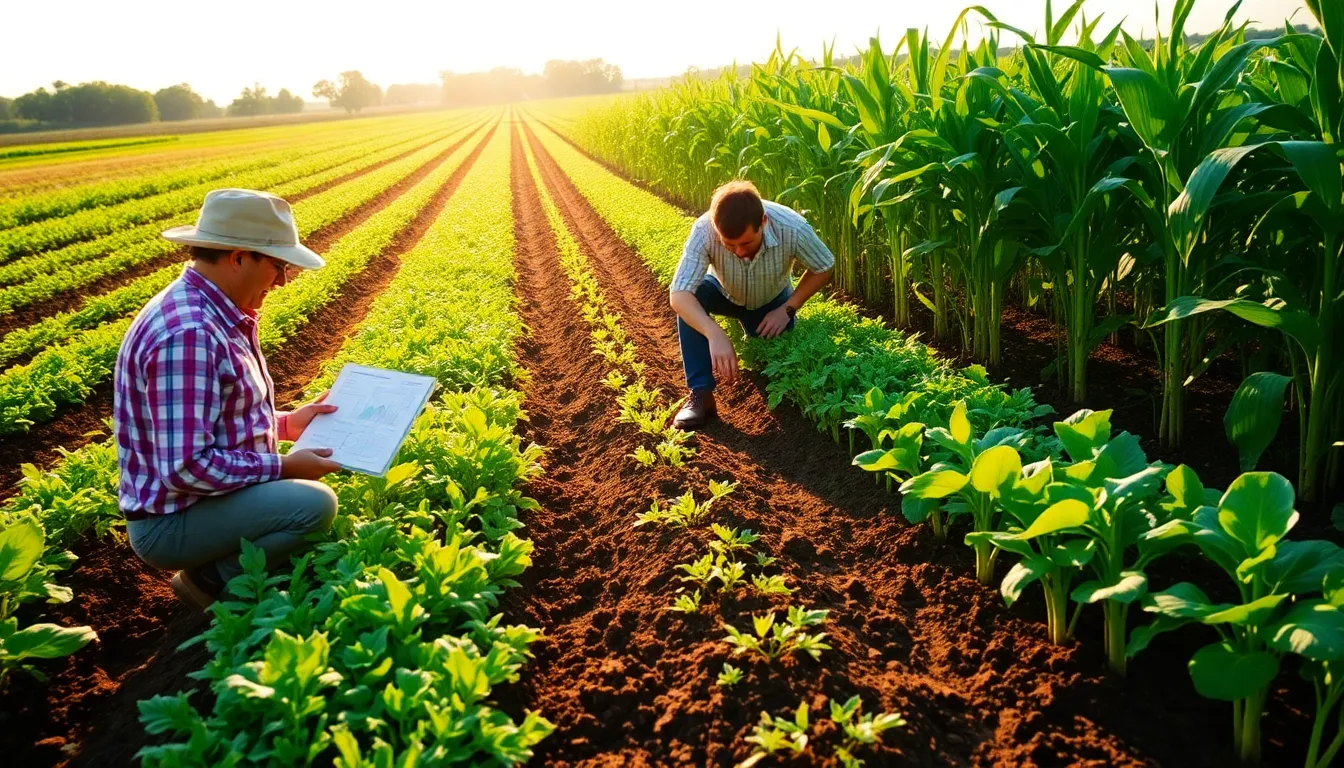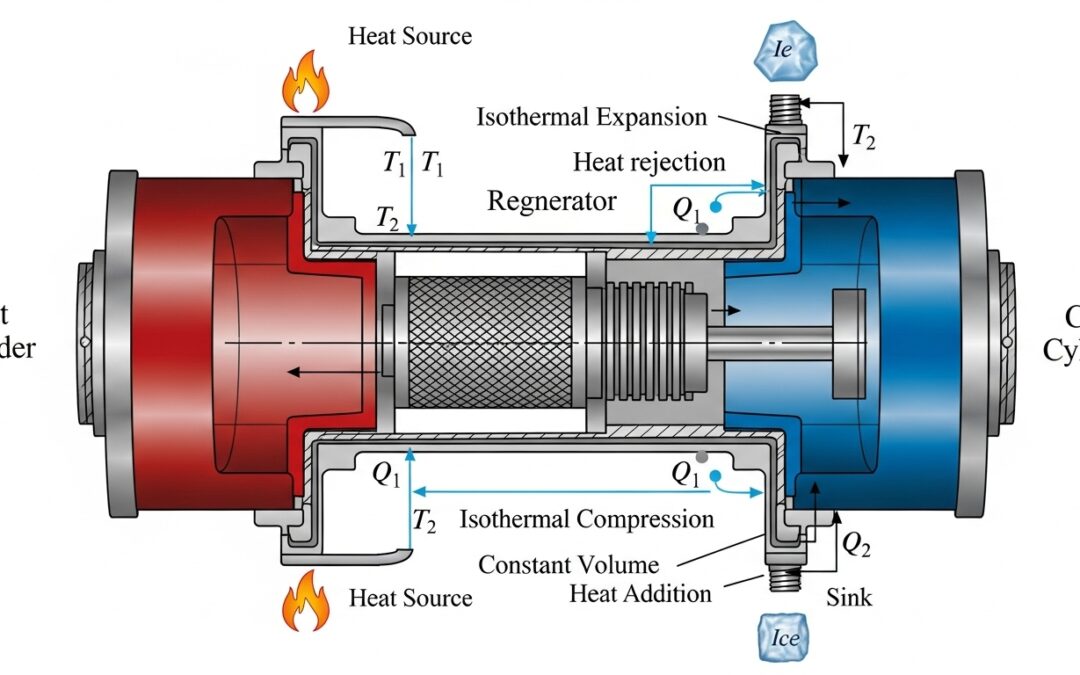Sustainable agronomy sits at the heart of modern farming, weaving soil science, plant genetics, and ecological balance into resilient harvests. In this article, we trace how Sustainable agronomy informs decisions from field layouts to policy, illustrating methods that improve yields while conserving resources, and empowering farmers to steward the land.
Table of Contents
- Sustainable agronomy: Foundations and History
- Sustainable agronomy: Soil and Nutrients
- Sustainable agronomy: Plant Breeding and Genetics
- Sustainable agronomy: Water Management and Irrigation
- Sustainable agronomy: Agroecology and Biodiversity
- Sustainable agronomy: Organic and Conventional Farming
- Sustainable agronomy: Agroforestry and Land Use
- Sustainable agronomy: Technology and Biotechnology Applications
- Sustainable agronomy: Policy, Economics and Green Revolutionary Lessons
- Final Solution: Implementing Sustainable agronomy
Read More
Welcome to a focused exploration of sustainable agronomy, where soil, genetics, and water converge with farming practice. This guide translates timeless agronomic wisdom into modern strategies, showing how disciplined approaches yield healthier crops, conserve resources, and sustain rural livelihoods. Join us as we map the territory of sustainable farming.
Sustainable agronomy: Foundations and History
Across centuries, Sustainable agronomy emerged by balancing crop production with soil vitality and ecological stewardship. Early crop rotations and manuring revealed soil biology’s central role in sustaining yields, while farmers learned that neglecting soil life undermines long-term productivity. This historical thread anchors our modern practices in humility and rigor.
Today, Sustainable agronomy blends genetics, ecology, and economics to guide field decisions and policy design. By studying nutrient cycles, microbial activity, and landscape context, practitioners optimize inputs, reduce waste, and safeguard water quality. The discipline remains dynamic, translating classic wisdom into data-driven strategies for resilient farming systems.
Sustainable agronomy: Soil and Nutrients
Healthy soil hosts a complex web of organisms and minerals. In Sustainable agronomy, attention centers on macronutrients (N, P, K) and micronutrients that govern crop performance. Understanding cation exchange and soil pH helps tailor amendments, ensuring roots access nutrients without excess leaching or soil degradation.
Practical soil management uses regular testing, cover crops, and reduced tillage. Sustainable agronomy promotes balanced fertilizer strategies, nutrient budgeting, and organic matter maintenance. By monitoring soil carbon, microbial diversity, and moisture retention, we support steady yields and build a resilient soil foundation for diverse cropping systems.
Sustainable agronomy: Plant Breeding and Genetics
Plant breeding under Sustainable agronomy emphasizes resilience, nutritional quality, and resource efficiency. By selecting traits like drought tolerance and disease resistance, researchers improve yields under challenging conditions while reducing input needs. This integration of genetics with soil and climate data elevates practical farming outcomes.
Advances include hybridization and biotechnological tools that align with sustainability goals. Under Sustainable agronomy, breeders test varieties in real-world soils and seasons, refining performance. The goal remains clear: crops that endure stress, require fewer fertilizers, and deliver dependable harvests for farmers and consumers alike.
Sustainable agronomy: Water Management and Irrigation
Water is a limiting resource, so Sustainable agronomy treats irrigation as a system-level decision. Efficient scheduling, soil moisture sensing, and crop water use metrics guide withdrawals, reducing waste. The approach integrates rainfall, runoff, and groundwater dynamics to sustain both crops and ecosystems.
Conservation practices include deficit irrigation, mulching, and soil cover. Sustainable agronomy encourages rainwater harvesting and smart irrigation technology, which minimizes losses while supporting steady growth. By aligning water management with crop phenology, farmers achieve higher water-use efficiency and long-term productivity.
Sustainable agronomy: Agroecology and Biodiversity
Agroecology embeds ecological principles into farm design, a core pillar of Sustainable agronomy. Polycultures, habitat corridors, and diversified rotations foster beneficial insects, nutrient cycling, and resilience against pests. This ecological perspective shifts emphasis from single-crop systems to resilient landscapes.
Maintaining biodiversity within fields and adjacent habitats reduces disease risk and stabilizes yields. Sustainable agronomy links biodiversity to ecosystem services such as pollination and soil structure. Practitioners measure diversity indices and adjust management to support stable, self-sustaining agricultural ecosystems.
Sustainable agronomy: Organic and Conventional Farming
Organic and conventional methods each have roles in Sustainable agronomy. Organic farming emphasizes soil fertility, biodiversity, and restrictions on synthetic inputs, while conventional approaches leverage targeted inputs with precision. The two tracks often converge through soil health, crop rotation, and evidence-based stewardship.
Integrating both streams, Sustainable agronomy encourages tracer studies, nutrient cycling, and lifecycle assessments to compare outcomes. Farmers adopt practices that maximize yields while minimizing environmental impact. The emphasis remains on science-guided decision-making rather than dogma, enabling scalable, sustainable food systems.
Sustainable agronomy: Agroforestry and Land Use
Land-use choices influence long-term productivity, a core concern of Sustainable agronomy. Agroforestry, windbreaks, and buffer strips improve microclimates, reduce erosion, and sequester carbon. By combining trees with crops, farmers diversify income streams while preserving soil and water resources.
Strategic land-use planning within Sustainable agronomy aligns tree and crop timing, water access, and nutrient flows. This holistic view supports multi-story systems that optimize space, preserve habitats, and build resilience against climate variability.
Sustainable agronomy: Technology and Biotechnology Applications
Modern tools—genomic selection, remote sensing, and decision-support platforms—advance Sustainable agronomy. Real-time data on soil moisture, nutrient availability, and pest pressure help tailor interventions precisely where needed, reducing waste and environmental footprint.
Biotechnology complements conventional breeding to speed trait development while maintaining safety. In Sustainable agronomy, field testing and regulatory considerations ensure that innovations improve yields, nutrition, and resource efficiency without compromising ecological integrity.
Sustainable agronomy: Policy, Economics and Green Revolutionary Lessons
Policy shapes access to technology, credit, and markets; Sustainable agronomy benefits when governance aligns with science and farmer needs. Market incentives, food security, and environmental regulations influence practice adoption, creating pathways for sustainable investments in soil, water, and biodiversity.
Learning from history, including the Green Revolution, guides present choices. Sustainable agronomy emphasizes adaptive management, risk reduction, and long-term planning. By integrating economics with agronomy, we foster resilient systems that can meet growing demand while protecting natural resources.
Final Solution: Implementing Sustainable agronomy
This final synthesis translates theory into field-ready steps. Sustainable agronomy advocates soil-first strategies, diversified cropping, and water-smart practices that fit local climates. Practitioners build knowledge through soil tests, on-farm trials, and stakeholder collaboration to refine scalable, sustainable farming models.
Adopting these principles requires continuous learning, robust data, and community engagement. The Final Solution in Sustainable agronomy is a living blueprint: adapt, monitor, and improve systems that feed populations while safeguarding the environment for future generations.
| Aspect | Key Takeaways |
|---|---|
| Foundations | Sustainable agronomy links soil health, genetics, and ecology to farming outcomes. |
| Soil & Nutrients | NPK, micronutrients, pH, cation exchange are managed in Sustainable agronomy. |
| Plant Breeding | Resilient, efficient crops developed through genetics within Sustainable agronomy. |
| Water Management | Smart irrigation and soil moisture optimize water use in Sustainable agronomy. |
| Agroecology | Biodiversity and ecosystem services underpin sustainable farming. |
| Farming Systems | Organic vs conventional integrated under Sustainable agronomy. |
| Land Use | Agroforestry and diversified landscapes improve resilience. |
| Technology | Biotech, sensors, data-driven decisions drive Sustainable agronomy. |
| Policy & Economics | Governance and market incentives guide adoption of sustainable practices. |
| Final Takeaway | Practiceable steps to implement Sustainable agronomy in diverse contexts. |
We also Published
RESOURCES
- Home | Agronomy for Sustainable Development
- Sustainable Agronomy Conference | American Society of Agronomy
- Registration open for 2025 Sustainable Agronomy Conference …
- Sustainable Agronomy Conference program & schedule | American …
- Rhizosphere Signaling: Insights into Plant-Rhizomicrobiome …
- Sustainable Agriculture | National Agricultural Library
- Agronomy
- npj Sustainable Agriculture
- Sustainable Agriculture – Science and Math Programs
- 2025 Sustainable Agronomy Conference – Wisconsin Land and Water







0 Comments